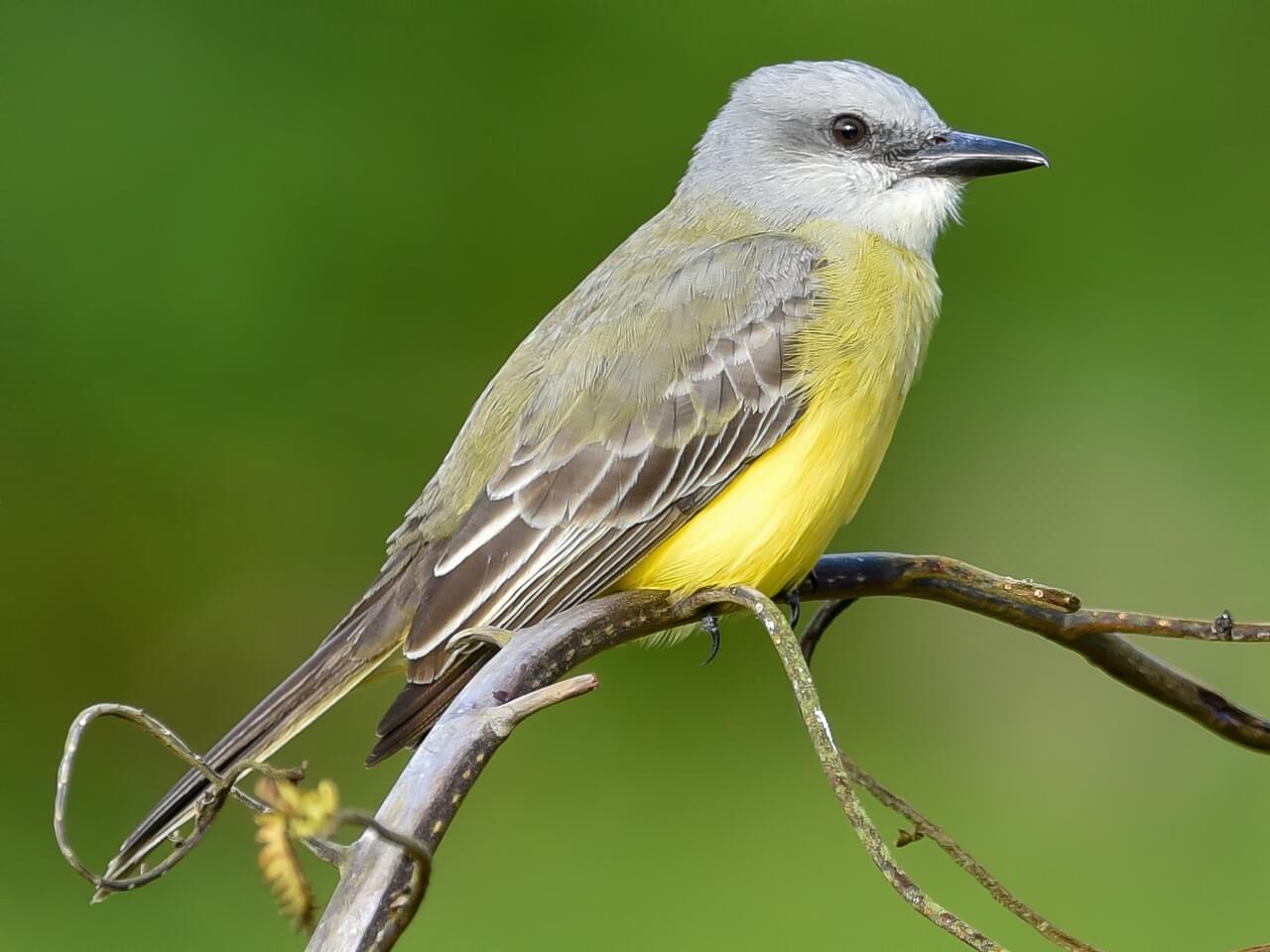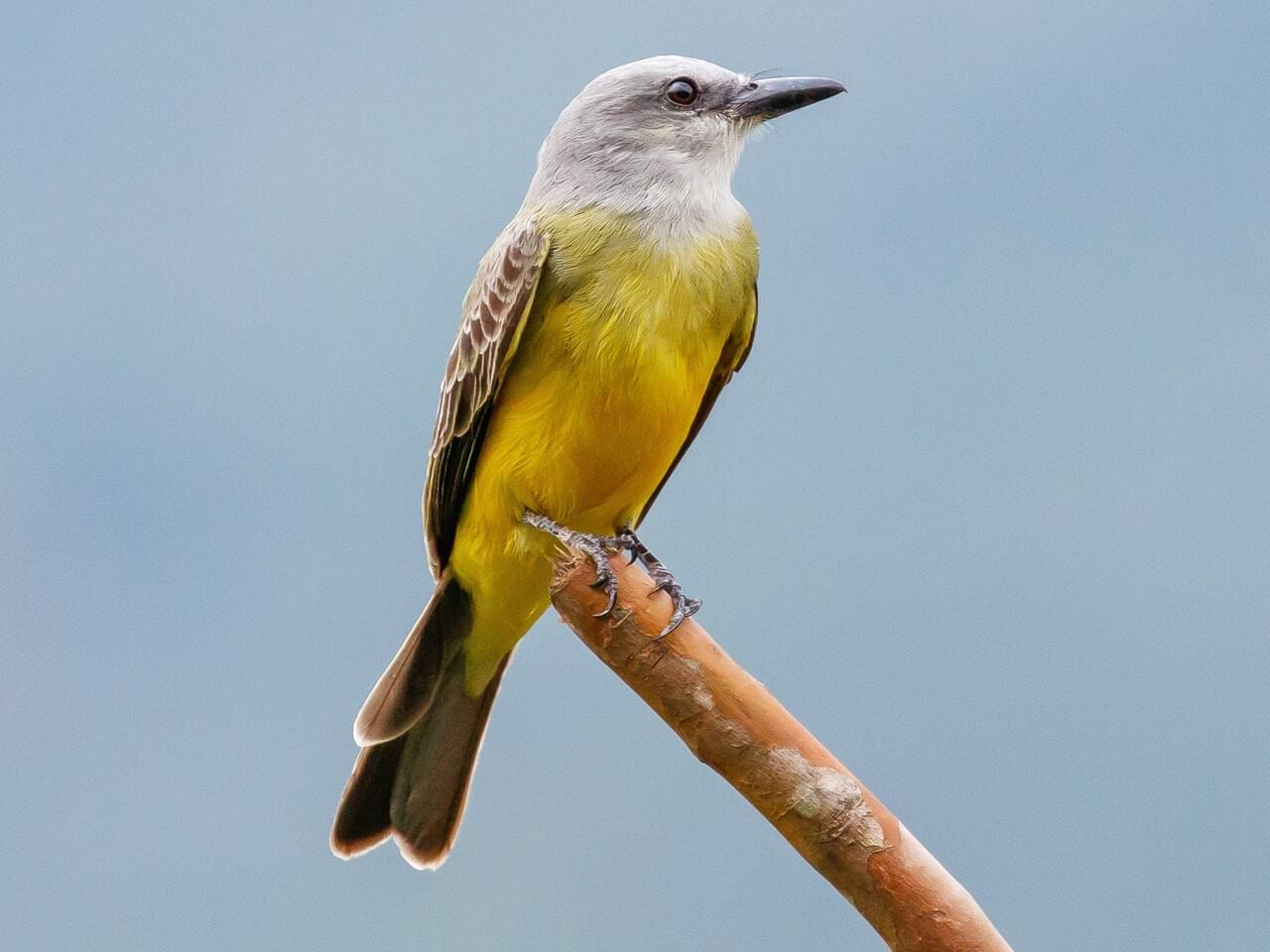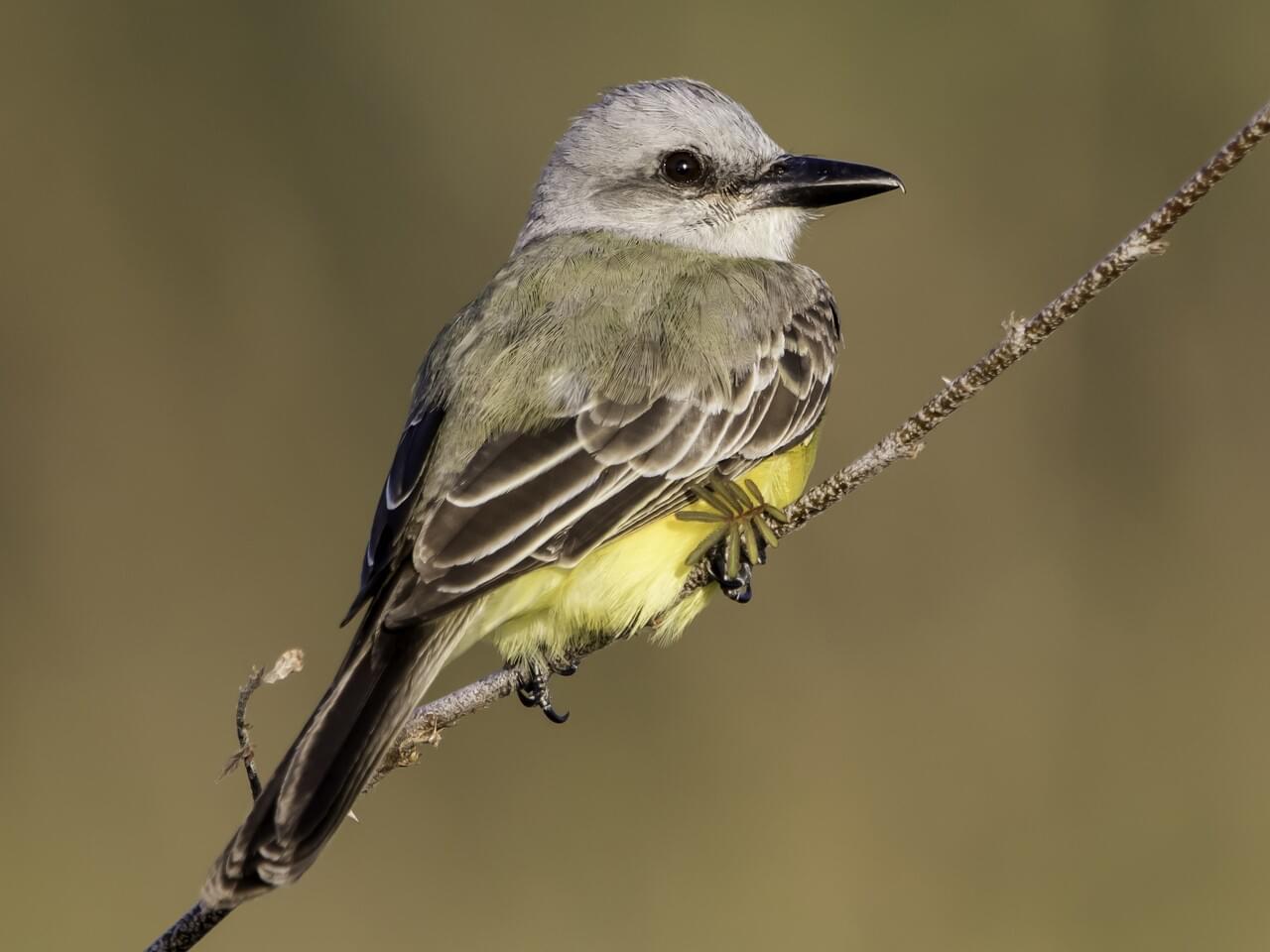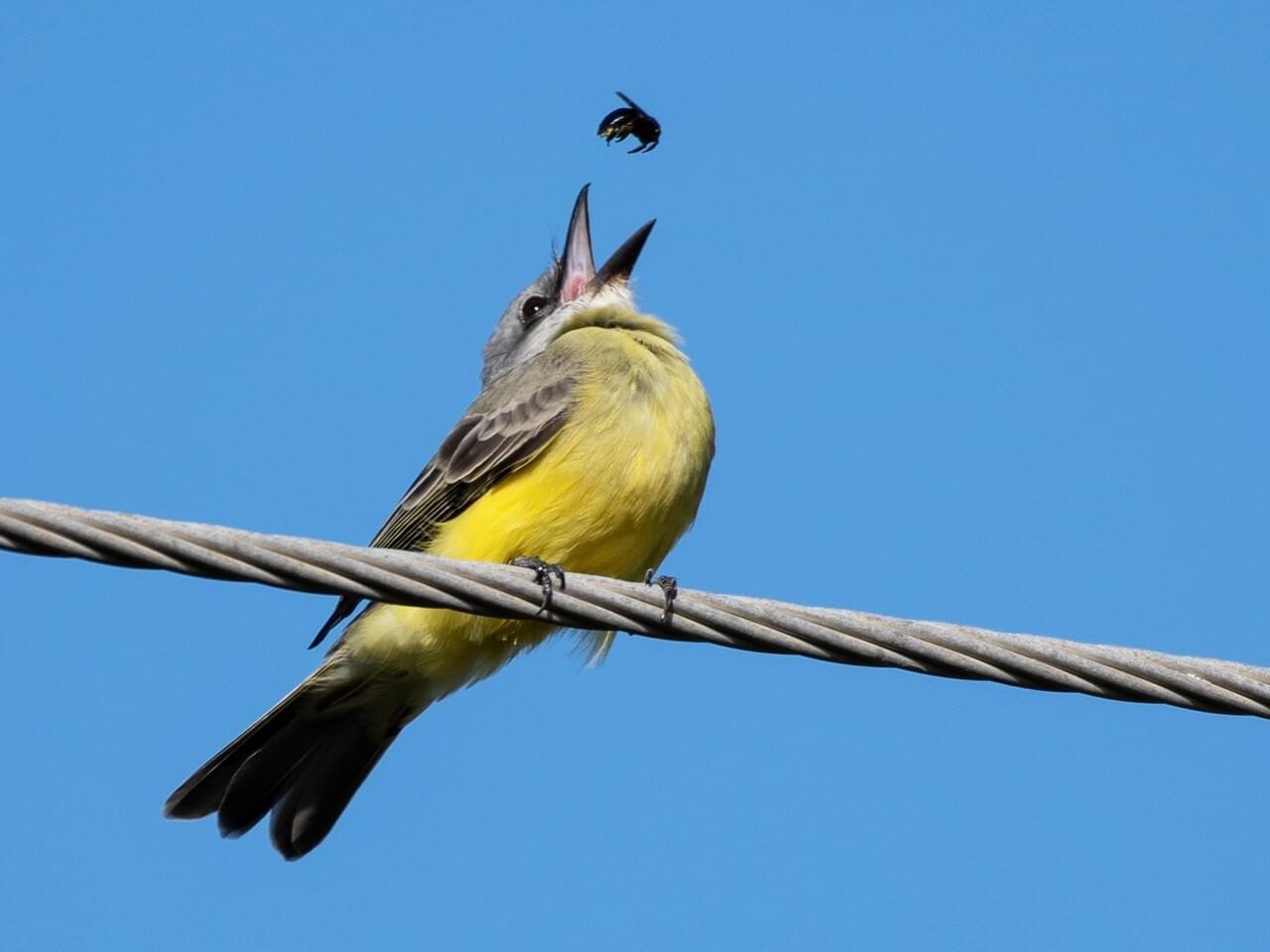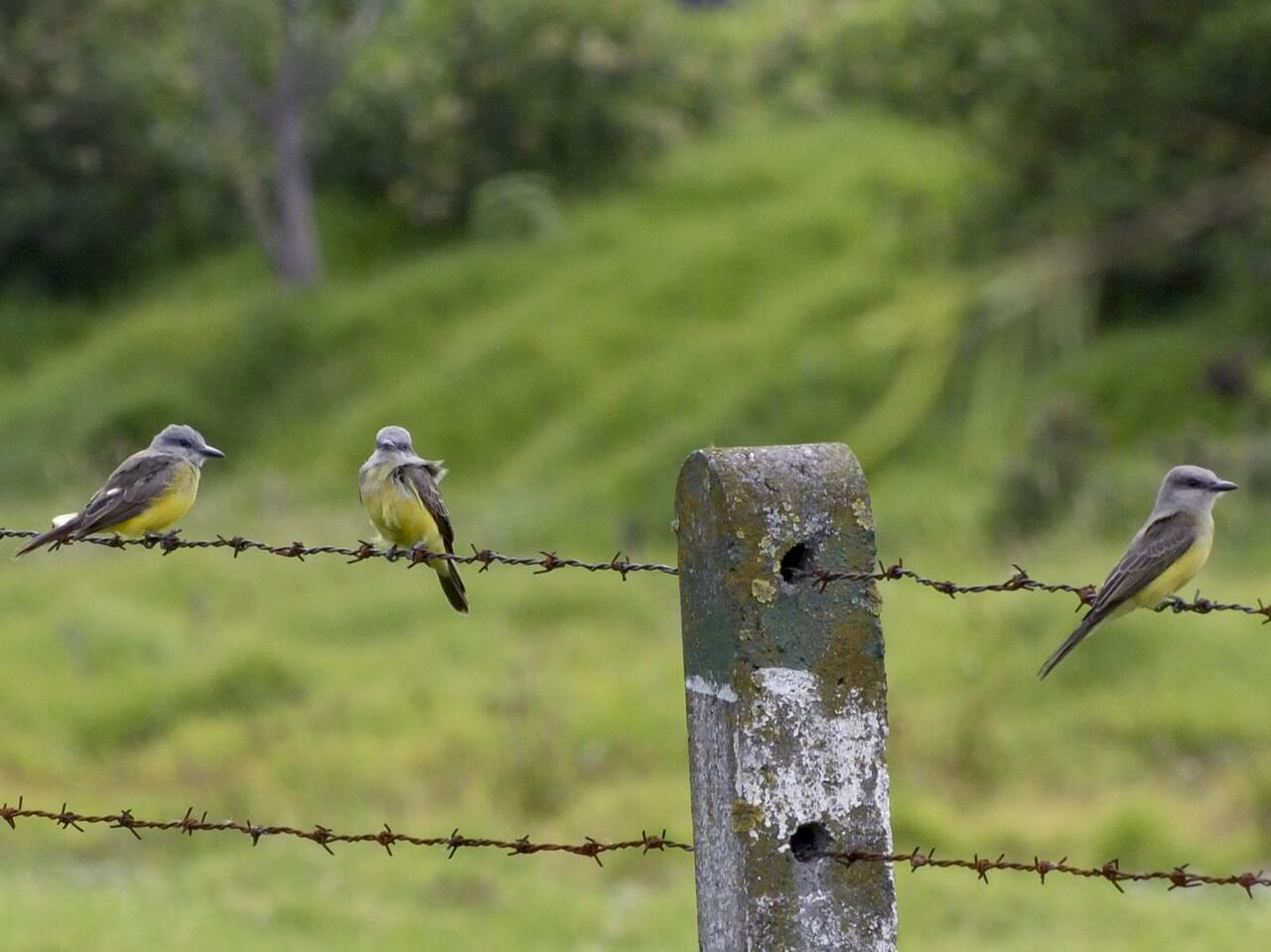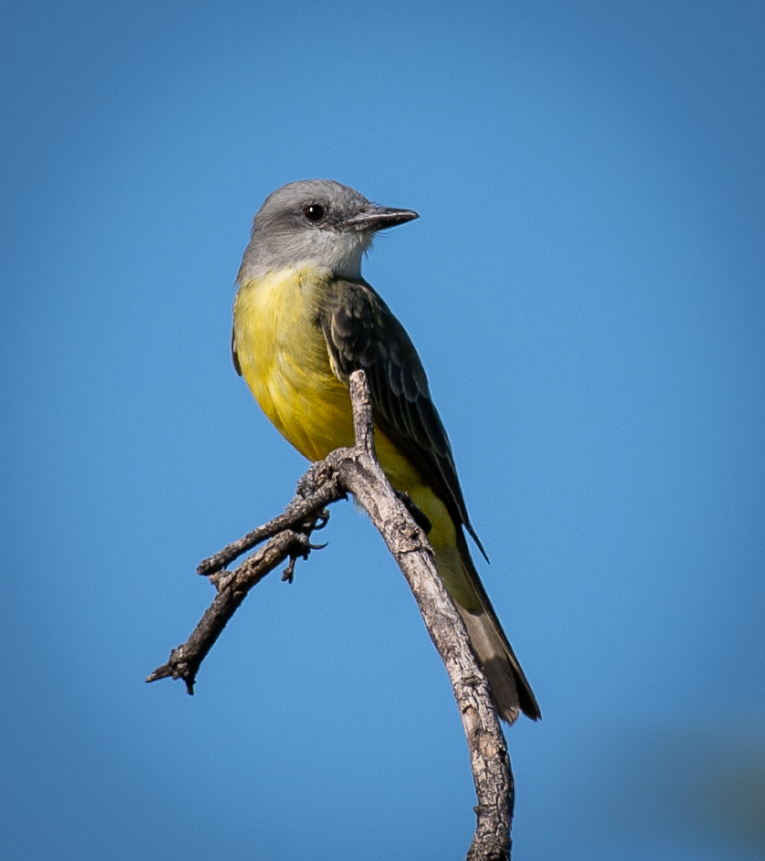 Photo ©
Mary McSparen
Photo ©
Mary McSparen
Tropical Kingbird
Regional Species
The Tropical Kingbird is a widespread and conspicuous bird of open forests, forest edge, scrubs, agricultural areas and urban parks and gardens. It feeds on insects and fruits, but forages almost exclusively by catching flying insects from a perch. The Tropical Kingbird is a territorial bird, and can be faithful to its territory for several years.
Range
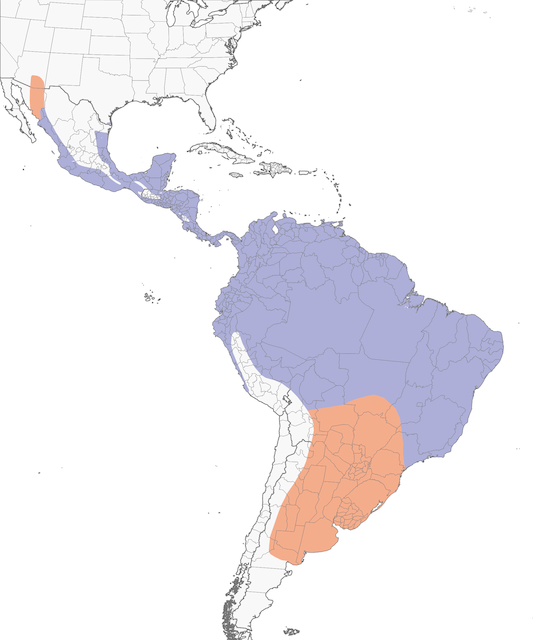
Habitat
The Tropical Kingbird is one of the most widespread and conspicuous inhabitants of open forests, forest edges, scrub, agricultural land and urban parks and gardens. It is frequently seen perched on exposed tree branches and on roadside wires.
Food
The Tropical Kingbird eats both insects and fruit. It catches insects primarily in flight. Common insects in its diet are beetles, dragonflies, grasshoppers, bees and wasps, termites, butterflies and moths. The Tropical Kingbird also feeds on fleshy fruits and berries usually those brightly colored ones like mistletoes, figs and guava.
Behavior
The Tropical Kingbird usually perches conspicuously, sallying in pursuit of aerial insect prey. It also may take prey from the ground, foliage or water, taking large prey items back to the perch, where it may beat them against the perch before consuming them. In regions where they stay year round, they also keep territories through the year.
Nesting
The Tropical Kingbird female build the nest with materials such as dead herbaceous vines, rootlets and root stems, fine woody twigs, weed stems, and dry grasses. The female lays between 2 and 4 eggs and incubates them alone. The male usually remains near the nest, sometimes moving closer to the nest when the female leaves the area to forage. Both parents feed the nestlings.
Appearance
Typical Sound

© Geoffrey A. Keller / Macaulay Library
Size & Shape
The Tropical Kingbird is a large flycatcher of 18 cm to 23 cm in length. It has a large head for a flycatcher, and a long and heavy bill. Its tail is long and slightly notched.
Color Pattern
The Tropical Kingbird has a bright yellow below with whitish throat, and grayish olive upperparts. The head is gray with a darker gray ear patch, and with a difficult to see red coronal patch. it has a black bill and legs, and a dusky brown tail. Its eyes are dark brown.
Plumage Photos
Similar Species
Similar to other flycatchers and kingbirds with yellow chests and bellies. However, it lacks white markings on the head. The top of its head is flatter than in other relatives. Its tail is slightly forked. The head and nape are gray, and contrast with the olive on the back.
Did you know?!
- Although a widespread bird and a seemingly typical kingbird, the Tropical Kingbird is among the most specialized of flycatchers. It forages almost exclusively by hawking insects from a perch.
- The Tropical Kingbird forages primarily during the day, but has been seen after dark taking flying insects near lights
- The Tropical kingbird can be faithful to its territory for several years.
